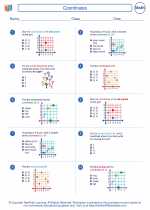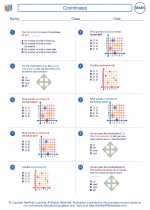Quadratic Equations
A quadratic equation is a second-degree polynomial equation in a single variable x.
The general form of a quadratic equation is:
ax2 + bx + c = 0
Where x represents the variable, and a, b, and c are constants with a ≠ 0.
Ways to Solve Quadratic Equations
- Factoring: If the quadratic equation can be factored, setting each factor equal to zero will give the solutions.
- Quadratic Formula: The quadratic formula can be used to find the solutions for any quadratic equation.
- Completing the Square: This method involves manipulating the equation to create a perfect square trinomial, from which the solutions can be found.
- Graphing: Graphing the equation and finding the x-intercepts can give the solutions.
Important Concepts
- Discriminant: The expression b2 - 4ac, which determines the nature of the solutions.
- If the discriminant is positive, the equation has two distinct real solutions.
- If the discriminant is zero, the equation has one real solution (a repeated root).
- If the discriminant is negative, the equation has no real solutions (two complex conjugate solutions).
- Vertex: The vertex of the parabola represented by the quadratic equation is located at the point (h, k), where h = -b/2a and k = f(h).
- Axis of Symmetry: The line x = -b/2a, which passes through the vertex of the parabola and divides it into two symmetric halves.
Practice Problems
Solve the following quadratic equations using the method of your choice:
- 2x2 - 5x + 2 = 0
- x2 + 4x + 4 = 0
- 3x2 - 7x - 6 = 0
Applications
Quadratic equations are widely used in physics, engineering, economics, and many other fields to model various real-world phenomena such as motion, trajectories, optimization, and more.
.◂Math Worksheets and Study Guides Fourth Grade. Coordinates
Study Guide Coordinates
Coordinates  Worksheet/Answer key
Worksheet/Answer key Coordinates
Coordinates  Worksheet/Answer key
Worksheet/Answer key Coordinates
Coordinates  Worksheet/Answer key
Worksheet/Answer key Coordinates
Coordinates 

 Worksheet/Answer key
Worksheet/Answer key
 Worksheet/Answer key
Worksheet/Answer key
 Worksheet/Answer key
Worksheet/Answer key

The resources above cover the following skills:
Geometry (NCTM)
Specify locations and describe spatial relationships using coordinate geometry and other representational systems.
Describe location and movement using common language and geometric vocabulary.
Make and use coordinate systems to specify locations and to describe paths.